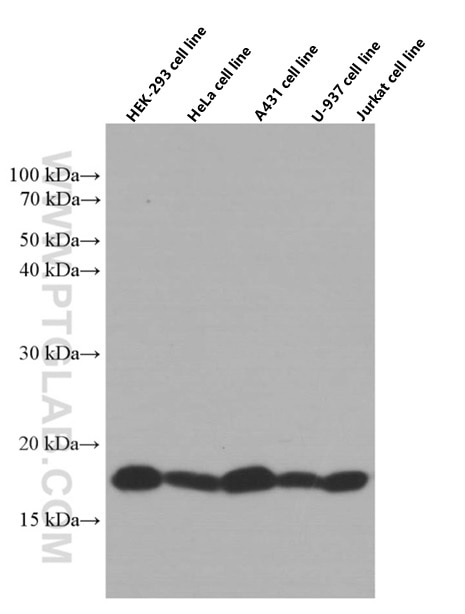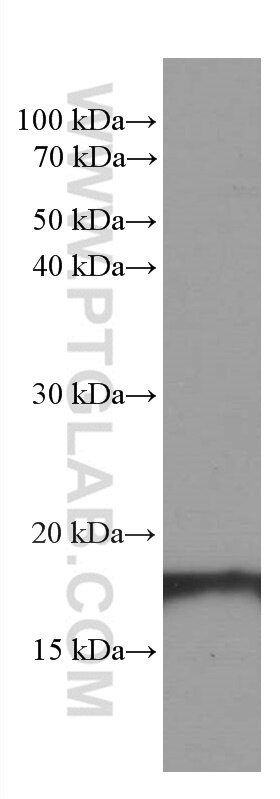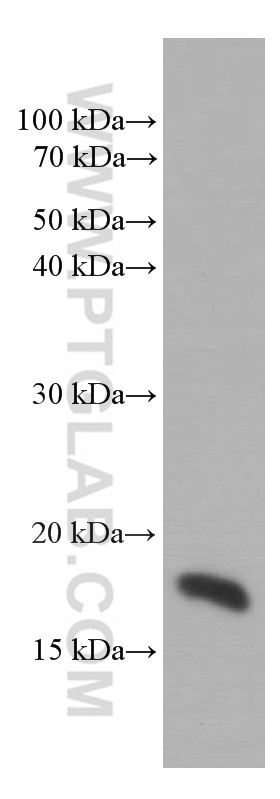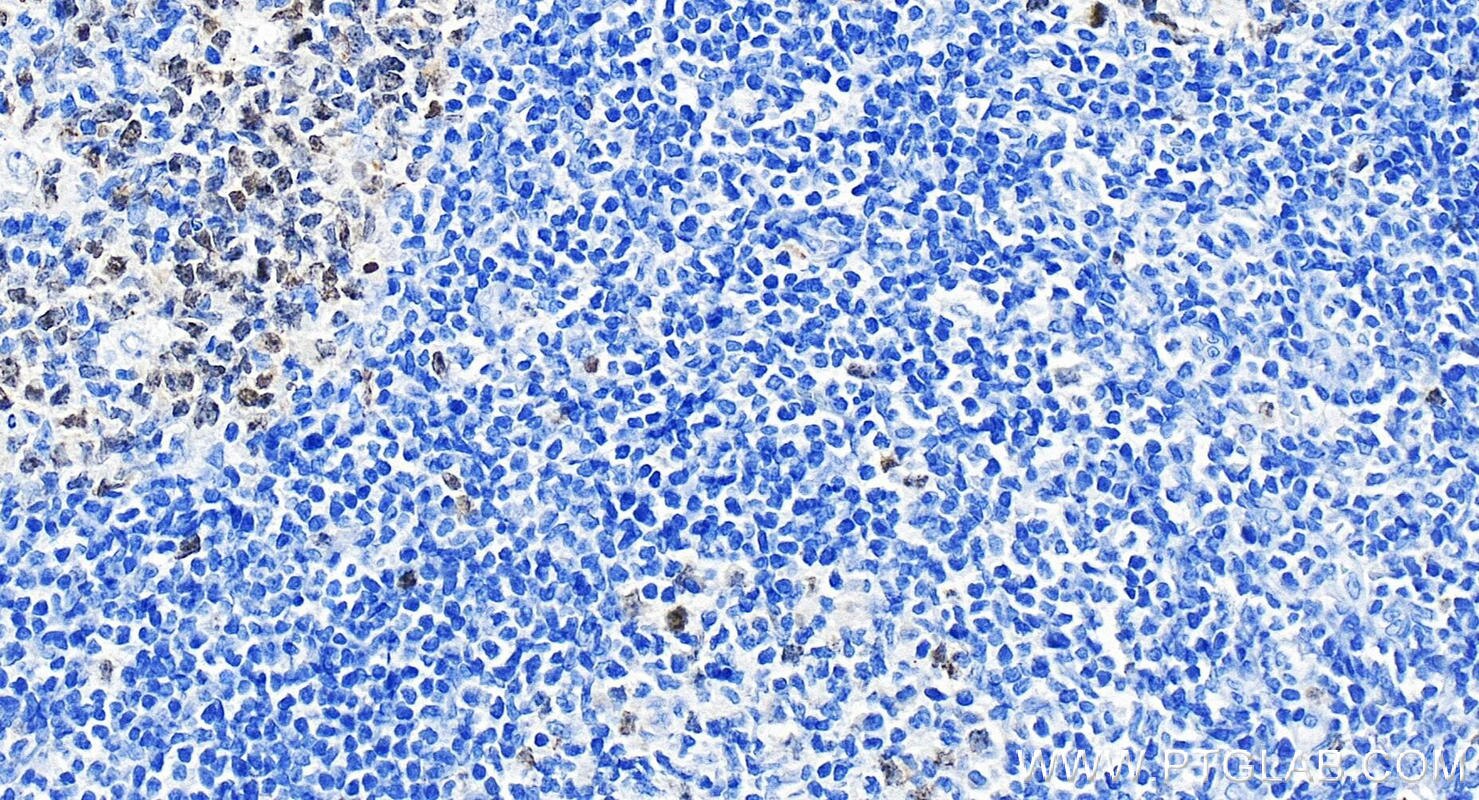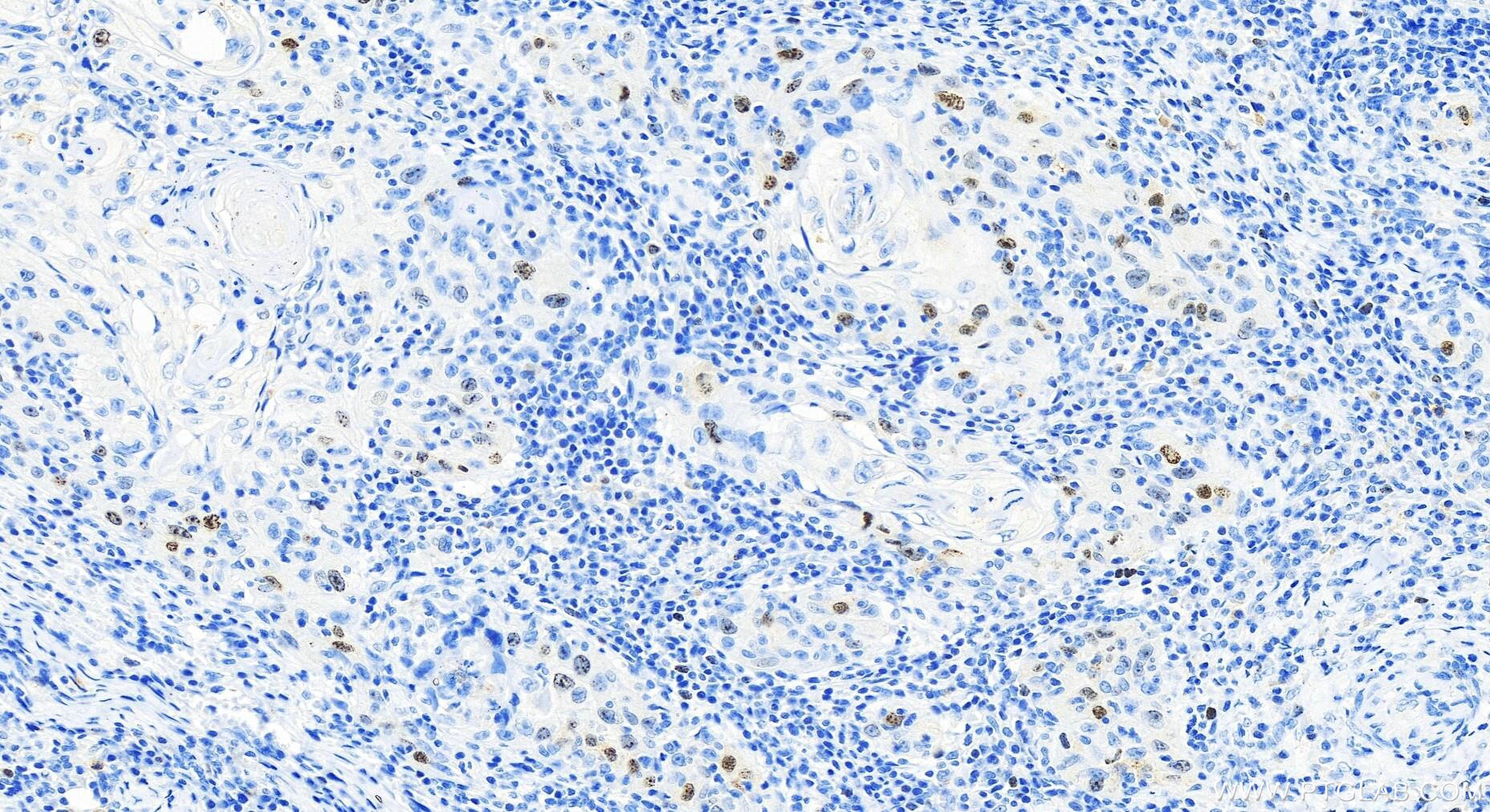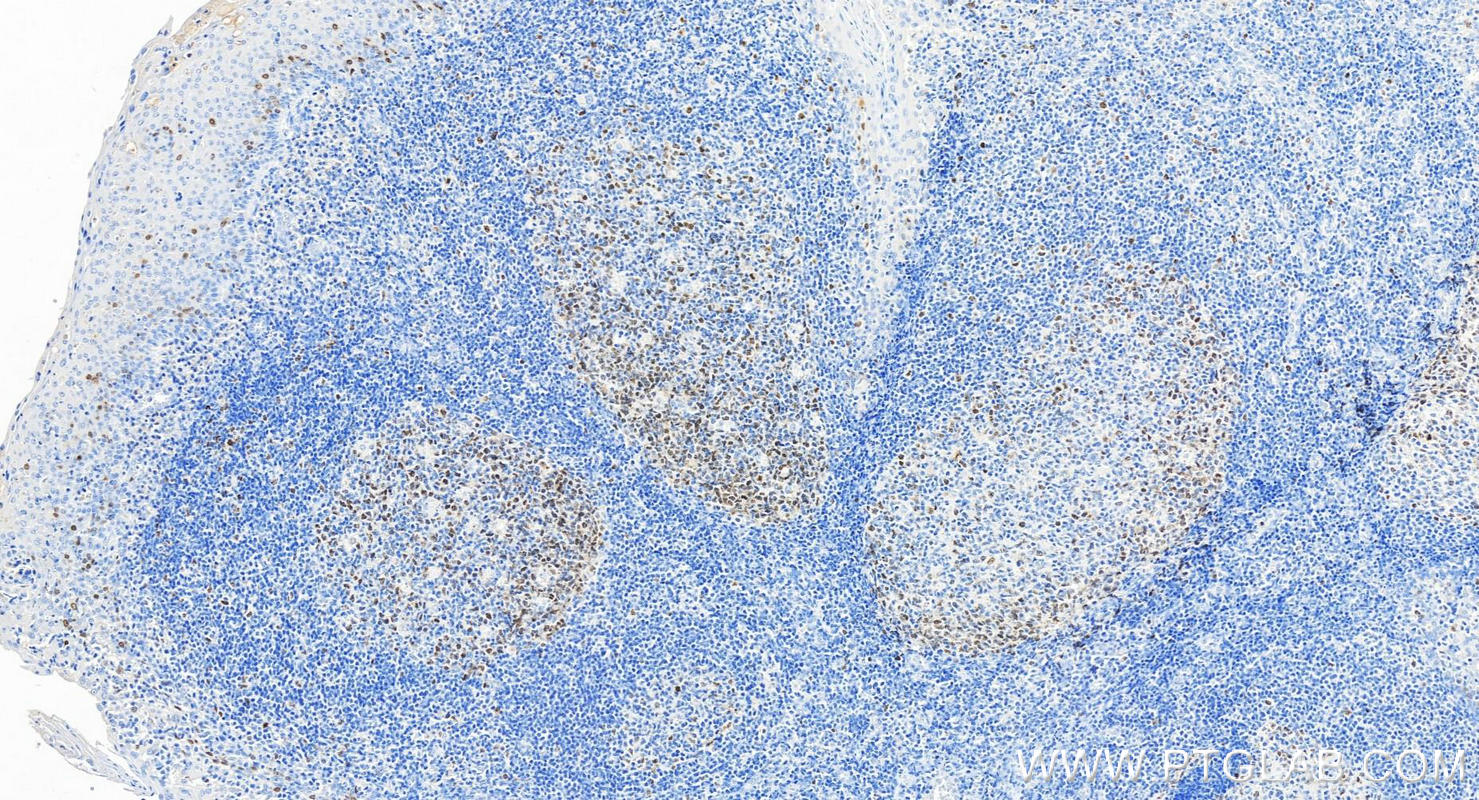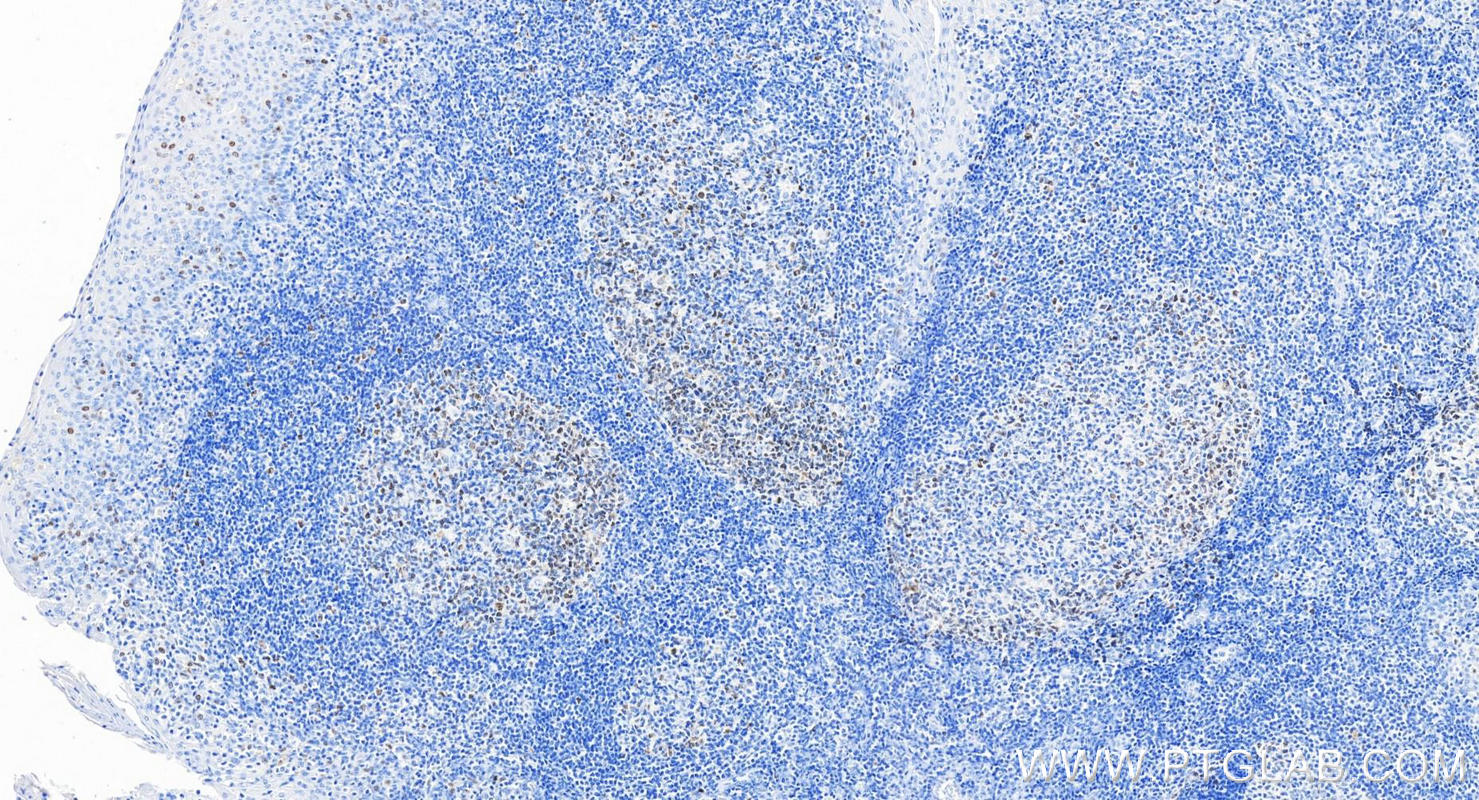Validation Data Gallery
Tested Applications
Recommended dilution
| Application | Dilution |
|---|---|
| It is recommended that this reagent should be titrated in each testing system to obtain optimal results. | |
Product Information
66495-1-PBS targets SURVIVIN in WB, IHC, Indirect ELISA applications and shows reactivity with human samples.
| Tested Reactivity | human |
| Host / Isotype | Mouse / IgG1 |
| Class | Monoclonal |
| Type | Antibody |
| Immunogen | SURVIVIN fusion protein Ag20958 相同性解析による交差性が予測される生物種 |
| Full Name | baculoviral IAP repeat-containing 5 |
| Calculated molecular weight | 16 kDa |
| Observed molecular weight | 18 kDa |
| GenBank accession number | BC008718 |
| Gene Symbol | Survivin |
| Gene ID (NCBI) | 332 |
| RRID | AB_2881860 |
| Conjugate | Unconjugated |
| Form | Liquid |
| Purification Method | Protein A purification |
| UNIPROT ID | O15392 |
| Storage Buffer | PBS only{{ptg:BufferTemp}}7.3 |
| Storage Conditions | Store at -80°C. |
Background Information
Survivin, also called BIRC5, is a unique member of the inhibitor of apoptosis (IAP) protein family. Survivin is a 16 kDa anti-apoptotic protein highly expressed during fetal development and cancer cell malignancy, but is completely absent in terminally differentiated cells. The differential expression of survivin in cancer versus normal tissues makes it a useful tool in cancer diagnosis and a promising therapeutic target. Survivin expression is also highly regulated by the cell cycle and is only expressed in the G2-M phase. It is known that survivin localizes to the mitotic spindle by interaction with tubulin during mitosis and may play a contributing role in regulating mitosis. Disruption of survivin-microtubule interactions results in loss of survivin's anti-apoptosis function and increased caspase-3 activity, a mechanism involved in cell death, during mitosis. It also is a direct target gene of the Wnt pathway and is upregulated by beta-catenin.
